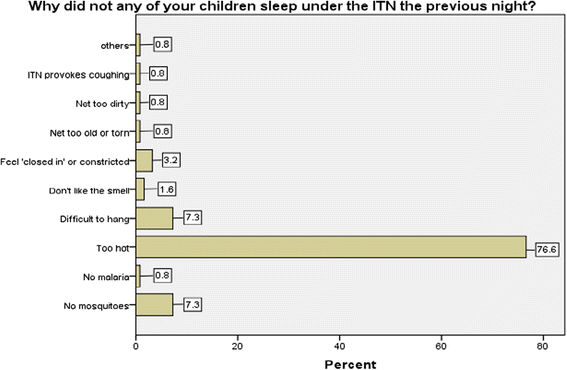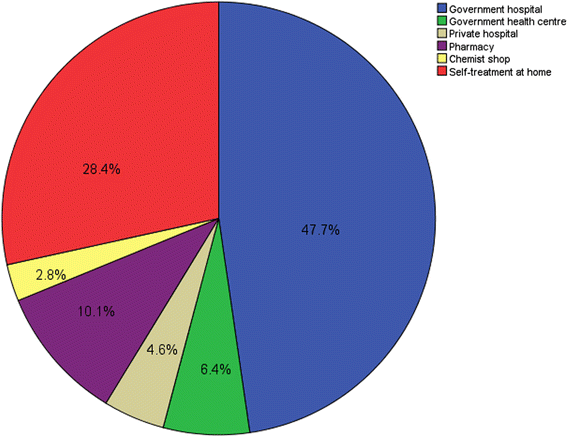Malaria Parasitaemia and the use of insecticide-treated nets (INTs) for malaria control amongst under-5 year old children in Calabar, Nigeria
- PMID: 27080122
- PMCID: PMC4832572
- DOI: 10.1186/s12879-016-1459-5
Malaria Parasitaemia and the use of insecticide-treated nets (INTs) for malaria control amongst under-5 year old children in Calabar, Nigeria
Abstract
Background: Malaria remains a major cause of febrile illness in Nigeria and interventions to reduce malaria burden in Nigeria focus on the use of insecticide-treated nets. This study determined the prevalence of malaria parasitaemia and the use of insecticide-treated nets (ITNs) for the control of malaria amongst under-five year old children in Calabar, Nigeria.
Methods: A total of 270 under-5 year old children were recruited and structured questionnaires were used to obtain information on the background characteristics of the respondents from their caregivers. Capillary blood samples were collected from each of the patients through finger-pricking and tested for malaria parasites by Rapid Diagnostic Test and microscopy.
Results: An overall parasitaemia prevalence of 32.2% (by Rapid diagnostic test kit [RDT]) and 40.1% (by microscopy) were obtained in this study. Forty-six (45.5%) of the febrile patients had malaria parasitaemia (by RDT) or 41 (59.4%) by microscopy. One hundred and fifty (55.6%) of the caregivers acknowledged the use of nets on doors and windows for malaria prevention and control. One hundred and thirty-nine (51.5%) mentioned sleeping under mosquito net while 138 (51.1%) acknowledged the use of insecticide sprays. Although 191 (71.5%) of the households possessed at least one mosquito net, only 25.4% of the under-5 children slept under any net the night before the survey. No statistically significant reduction in malaria parasitaemia was observed with the use of mosquito nets among the under-5 children. Almost all the respondents (97.8%) identified mosquito bite as the cause of malaria. Fever was identified by the majority of the respondents (92.2%) as the most common symptom of malaria.
Conclusions: The findings of the study showed high prevalence of parasitaemia and that fever was significantly associated with malaria parasitaemia. Mosquito net utilization among the under-fives was low despite high net ownership rate by households. Therefore, for effective control of malaria, public health education should focus on enlightening the caregivers on signs/symptoms of both uncomplicated and complicated malaria as well as encourage the use of ITNs especially among the under-fives.
Keywords: Caregiver; Insecticide-treated net (ITNs); Nigeria; Parasitaemia; Plasmodium falciparum.
Figures
References
-
- World Health Organization . World malaria report. Geneva: World Health Organization; 2011.
-
- Federal Ministry of Health [FMOH]/National Malaria Control Programme [NMCP] Strategic Plan 2009–2013: A road Map for Malaria control in Nigeria, Abuja. 2008.
MeSH terms
Substances
LinkOut - more resources
Full Text Sources
Other Literature Sources
Medical



